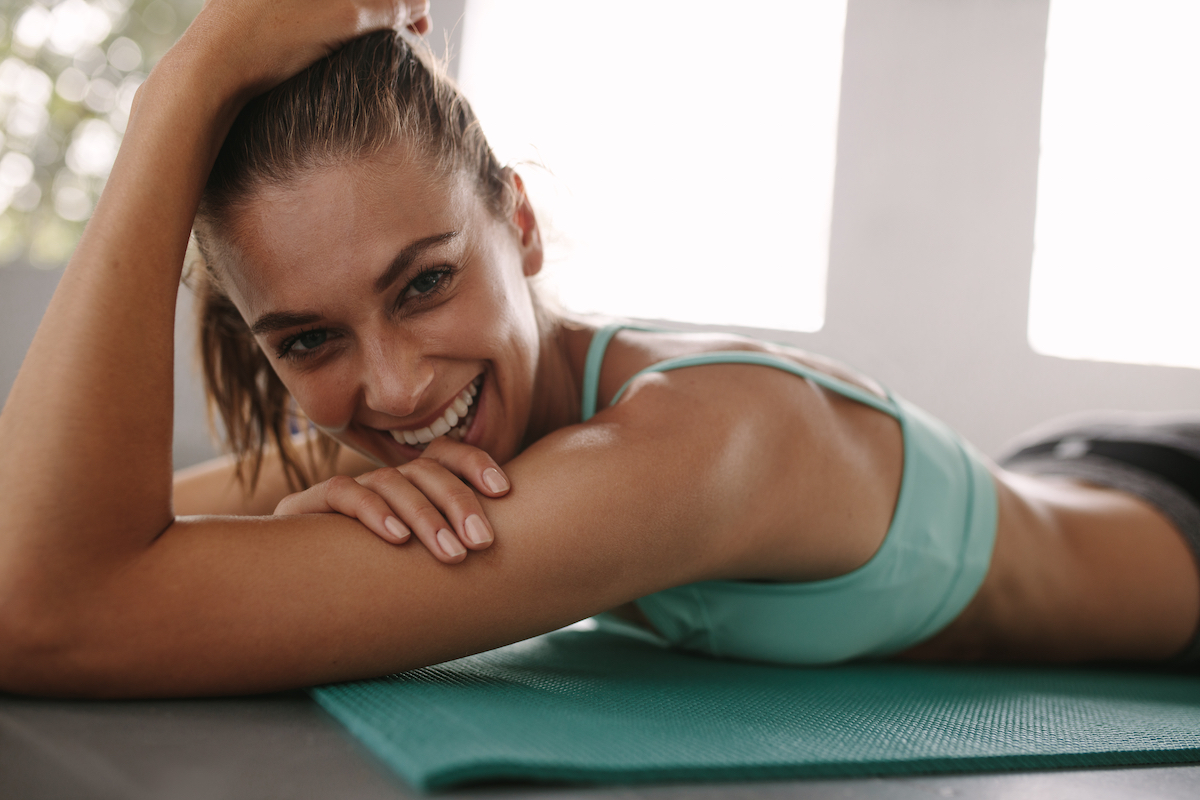Run This Much to See Visible Changes to Your Body, Says Olympian Runner

If you're among the nearly 60,000,000 runners of America, good for you. You're putting yourself at a lower risk of heart disease, cancer, and even neurological diseases such as Alzheimer's and Parkinson's. You're probably sleeping better, and you're no doubt priming your body for a longer life. According a study in Mayo Clinic Proceedings, running six miles per week—or roughly 52 minutes total—could potentially add upwards of six years to your life. "The great news is that you don't have to run a marathon to benefit from [running]," Edward Laskowski, M.D., of the Mayo Clinic Sports Medicine Center, said of the study.
But let's say your goal is getting a leaner figure and perhaps even dropping a few pounds. How often do you have to run, and how soon can you expect to see results when you gaze at your figure in the mirror? Luckily, the folks at PopSugar tracked down Ashley Natasha Kelly, who competed in the 2016 Rio Olympic Games and has since founded Aktive Fit by Ashley Natasha, for answers. Here are a few takeaways she revealed—along with a couple of amazing benefits of running. So read on, and if you prefer to walk your way to better fitness, don't miss The Secret Trick for Walking for Exercise, Says Harvard.
It Takes 2 to 3 Weeks to See Results

One of the great benefits of running—and there are many—is the sheer accessibility of it. You don't need a $5,000 carbon bike, a $2,000 Peloton, or a $400/month gym membership with access to HIIT classes. You just need a pair of really great shoes. As Daniel O'Connor, Ph. D., professor of health and human performance at the University of Houston, explained to Runner's World: "You just need a pair of decent shoes, some creativity, and maybe a friend or two to develop a walking or running plan. It's less expensive than joining a gym or having a personal trainer."
Once you're all set to run, how soon can you expect to see results? Well, according to Kelly, the key to running for slimming down is consistency, a better diet, and, yes, incorporating some resistance training into your routine. If you can do all of those, you'll see visible results to your body fairly quickly. "Within two to three weeks of running three to four times a week, strength training three times a week, and leaving days for recovery, you will notice changes in how you look," she told PopSugar. And for more great exercise tips, don't miss These Secret Little Exercise Tricks That Can Add Years to Your Life.
If You're Running to Get Lean, Take Progress Photos

"The scale may not be the best judge as building muscle can actually cause weight gain, so be sure to take weekly progress photos," she advises. "If you have a specific goal you want to reach, consult a professional fitness trainer so they can help create a unique plan for you."
Along the Way, Enjoy the Benefits

If you're running goals are simpler—and include better mental health—you don't have to run nearly as much. According to a 2011 study published in the journal Psychology of Sport and Exercise, running or jogging for just 10 minutes on a grassy field significantly improved mood compared to completing a cognitive task for 10 minutes. A review of dozens of scientific trials found that "exercise is moderately more effective than a control intervention for reducing symptoms of depression.
"While running is sometimes linked to short-term cortisol spikes, a 2019 study revealed that simply being outside can actually decrease your cortisol at a rate of over 21 percent per hour," adds Tricia Pingel, NMD, an Arizona-based naturopathic physician.
And You'll Live a Longer Life

Research published earlier this year in PLOS Medicine offers further support that a daily run, even a short one, can offer big health benefits. Drawing on data gathered from accelerometers worn by more than 90,000 participants, the researchers found that those who were most active enjoyed an average reduction in risk of cardiovascular disease of 48% to 57%. And if you prefer to walk your way to better health, make sure you're aware of The Single Worst Shoes for Walking Every Day, According to a New Study.








